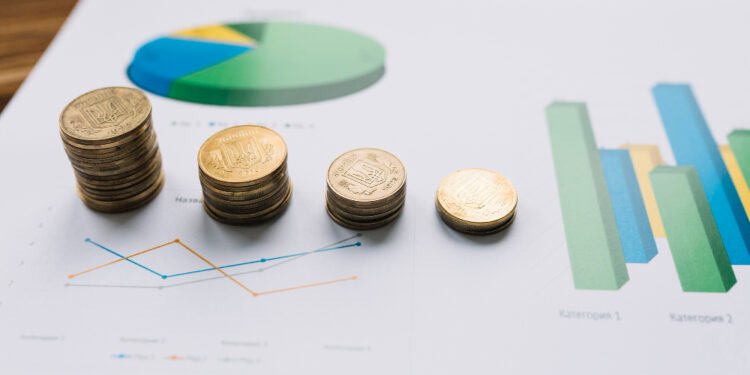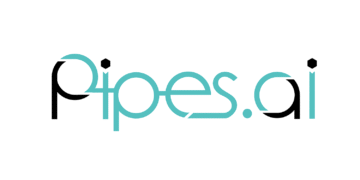Creating a society where everyone has equal economic opportunities is a big challenge. It requires understanding how access to resources and opportunities affects us all. Economic gaps hold back communities, impacting jobs, education, and overall well-being.
To achieve fairness, we must tackle the deep-rooted inequalities that cause these gaps. Economic equity means everyone gets the same chance, no matter their background. The Economic Development Administration (EDA) works to build local strengths, showing the importance of community-focused investments.
By ensuring fair access and outcomes, we can build a stronger economy for everyone. But, how do we make sure everyone has a fair shot at success?
Key Takeaways
- Economic equity is essential for creating a fairer society where everyone has access to the same opportunities and resources.
- Economic disparities hinder communities from realizing their full economic, affecting employment, education, and quality of life.
- The Economic Development Administration (EDA) plays a critical role in promoting equitable access and outcomes through investments in community-specific resources.
- Systemic inequalities perpetuate economic disparities, and addressing these inequalities is critical to achieving economic equity.
- Promoting wealth distribution and income equality is vital for creating a more resilient economy that benefits all.
- Community-specific resources and investments are necessary for building local capacities and promoting economic equity.
Understanding Economic Equity in Modern Society
Economic equity is key in today’s world, linked to fairness and access to money. It means everyone gets a fair share of resources and chances. Over 50 years, we’ve made big strides in gender equality, but money issues are big. Poor families often live in cramped, bad conditions.
Economic equity is different from just equality. It recognizes that everyone has different needs. It aims to give everyone the chance to succeed, promoting fairness and money access. The fight for economic equity has been shaped by many things, like government actions and social movements.
Defining Economic Equity vs. Equality
Many think economic equity and equality mean the same thing, but they don’t. Equality means everyone gets the same things. Economic equity means everyone gets what they need, considering their unique situations. This difference is important for tackling money problems and ensuring fairness.
The Historical Evolution of Economic Equity
The journey of economic equity has seen big moments, like the Great Society programs in the 1960s. These programs aimed to cut poverty and ensure everyone had a fair shot. They showed how economic fairness and social justice go hand in hand, fighting for equal chances for all.
Key Principles of Equitable Economics
Equitable economics is based on a few main ideas: access, process, and outcome. These ideas help make sure everyone has a fair chance, fighting against unfair money systems. By following these principles, we can build a society where everyone can do well.
The Current State of Global Economic Disparity
Global economic inequality is very high. It shows a big gap not just between countries but also within them. Health and education gaps add to this problem, making it hard to get everyone paid fairly and to have equal access to resources.
The World Inequality Database shows that income inequality before taxes and benefits is a big issue. The World Bank data looks at income or consumption after taxes and benefits. It varies by country and year, showing how complex economic disparity is.
The Gini Coefficient, a measure of inequality, shows big gaps in countries like Zambia, Brazil, and South Africa. Their coefficients are 70.1, 66, and 63, respectively.
Studies say cutting the Gini Coefficient by 1% can help more than a 1% increase in GDP. To do this, we need to push for fair wages and make sure everyone has access to basic services like education, healthcare, and sanitation. Groups like Oxfam are trying to reduce inequality through programs and advocating for better governance.
To tackle economic disparity, we need a plan that looks at jobs, education, access to resources, business growth, infrastructure, and quality of life. By understanding and addressing global economic disparity, we can work towards a fairer society. This will help reduce economic gaps and promote growth for everyone.
Barriers to Achieving Economic Equity
Economic empowerment faces many barriers. These obstacles limit access to resources and opportunities. One big problem is the unequal wealth distribution. This issue keeps economic gaps wide.
In 2019, Black and Latinx families had much less wealth than white families. Their median wealth was $24,000 to $36,000. White families had a median wealth of $188,000.
Systemic Obstacles in Wealth Distribution
These obstacles are deeply rooted in our economic system. They make it hard to achieve income equality. The wealth gap grows because 90% of the wealthiest 1% are white.
They hold 65% of all households. This gap is due to historical and ongoing inequalities. These have limited economic chances for marginalized groups.
Policy and Legislative Challenges
Policymakers play a key role in promoting economic equity. But, policy and legislative challenges often slow progress. For example, the federal minimum wage has not changed in 13 years.
This leaves many low-income families struggling. To empower the economy and promote wealth distribution, we need policies that address these inequalities. We must also work towards income equality.
The Role of Financial Inclusion in Economic Justice
Financial inclusion is key to economic justice and social protection. Women’s World Banking found that 31% of women lack an active bank account. This shows the need for special financial inclusion efforts.
By giving access to formal financial services, financial inclusion helps fight poverty and inequality. It lets people manage their money and invest in activities that bring in income.
Research shows that more financial inclusion means more savings, investments, and startups. This boosts economic growth and stability. Programs aimed at women can also improve education and health, helping achieve gender equality.
Innovative lending and online platforms help small businesses get funding. This is a big help for those who can’t get loans from traditional banks.
Financial education programs teach people how to make smart money choices. Mobile banking apps offer 24/7 access to financial services. This is great for people in remote areas.
By pushing for financial inclusion, we aim for a fairer society. Everyone should have the chance to succeed, leading to economic justice and social protection.
Measuring and Tracking Economic Equity Progress
We can track economic equity by looking at different signs, like key performance indicators and international benchmarks. It’s key to check how well policies work to make the economy fairer for everyone.
Key Performance Indicators
Indicators like real GDP growth and income equality show how well an economy is doing. They help us see where we can make things more equal.
International Benchmarks
Tools like the Gini coefficient let us compare economic fairness around the world. They help us see what works best and where we can do better.
Success Metrics and Monitoring Tools
Metrics like poverty rates and wealth distribution tell us if we’re getting closer to economic fairness. Tools like data analytics help us keep track and find ways to improve, making sure everyone has a fair chance.
Strategies for Promoting Wage Equality
Promoting wage equality is key to a fairer society. The gender pay gap is 20%, with women earning 80% of men’s pay. This gap is worse for women of color, migrant women, women with disabilities, and those with children. We need strategies that empower economically and fight for social justice.
One way to tackle this is by supporting women and minorities in leadership. This includes training and fair pay. Employers should check if pay is fair for similar work. They should also share salary ranges to help close the gap.
Encouraging both men and women to take parental leave is vital. This helps in achieving equal pay for similar work. Reviewing pay plans ensures fairness, including for part-time workers. These steps help us strive for wage equality and social justice.
Pay equity audits must be ongoing, showing that just adjusting pay isn’t enough. Using regression analysis helps find pay gaps based on gender and race. A thorough approach to wage equality leads to a fairer society, where everyone has economic chances.
Building Inclusive Economic Systems
Investing in fair economic systems boosts growth for everyone. When more people can work, buy things, and start businesses, the economy grows. This leads to economic empowerment, where people and communities control their money.
Access to Financial Services
Financial inclusion is key to fair economies. It means people can get to bank accounts, loans, insurance, and save for retirement. With these services, people can manage money, plan for the future, and fully join the economy. This supports financial inclusion and social protection.
Community Development Programs
Community programs are vital for inclusivity. They cover education, housing, healthcare, and justice reform. These efforts meet the needs of rural and urban areas, ensuring everyone has what they need to succeed. Investing in these programs helps create a fairer society and promotes economic empowerment.
The Impact of Technology on Economic Equity
Technology can greatly affect economic fairness, helping to bring about social justice. Studies show it can make information, education, health, and financial services more accessible. Yet, it can also widen gaps by favoring certain skills over others.
The rise of robots has led to more than 1.7 million jobs lost in manufacturing. This shows how tech can both help and hurt in terms of jobs. The digital divide is a big worry, as not everyone has equal access to technology.
New tech can change how we work, sometimes making jobs obsolete. To fight this, ideas like Universal Basic Income are being explored. It’s important to find a balance between making things more efficient and keeping jobs secure.
Technology can also make things more productive, saving costs and time. For example, a big company saw a 14% boost in productivity with new software. But, not everyone gets to use these new tools, leading to unfair economic outcomes.
As AI gets better, worries about losing jobs grow. It’s vital to think about how tech affects fairness and justice in the economy.
Policy Solutions for Economic Empowerment
To achieve economic empowerment, we need to create policies that support social justice. These policies should help people overcome barriers to resources and opportunities. Governments can support entrepreneurship, education, and skill development through laws and programs.
Recent data shows that over 340 million women and girls will live in extreme poverty by 2030. This calls for policy changes to fight poverty and empower the economy. Developing countries need $360 billion yearly for gender equality, which can be done through empowering policies.
Legislative Reforms
Legislative reforms are key to economic empowerment. They help remove barriers to resources and opportunities. Laws that ensure equal pay, protect workers, and support businesses can reduce poverty and empower the economy.
Government Initiatives
Government programs can also empower the economy. They provide education, training, and resources. For example, programs for small businesses create jobs and stimulate growth. Investing in digital infrastructure also helps by connecting people to information and markets.
International Cooperation
International cooperation is vital for economic empowerment. It helps tackle global challenges that block access to resources. International groups offer technical help, funding, and expertise for empowering policies. Together, we can fight poverty and achieve social justice, leading to a more prosperous society.
Creating Sustainable Paths to Economic Mobility
Economic mobility is key to a fairer society. It can be helped by education and entrepreneurship. The Kresge Foundation’s BOOST initiative supports six U.S. cities to help low-income families. About 12% of low-income families in the U.S. get access to services that help with education and jobs.
Education is vital for economic mobility. Burning Glass studied millions of resumes to find three types of middle-skill jobs. Lifetime jobs start with good pay, while springboard jobs offer a chance to move up. With more education, springboard jobs can lead to better pay.
Education and Skill Development
Programs that mix IT and health care skills boost employment by 25%. Community colleges and nonprofits have seen a 15% higher job placement rate. Education and skills are key to moving up, and programs that offer these can make a big difference.
Entrepreneurship Support
Supporting entrepreneurs is also important for economic mobility. The Gates Foundation’s EMO strategy started in 2018 with $160 million. In 2022, they added $460 million, supporting efforts until 2026. This support helps people start and grow businesses, leading to more economic stability.
Conclusion: Moving Toward a More Equitable Future
To create a more equitable future, we need a broad and fair approach. This includes tackling economic inequity and pushing for social justice. The journey might seem tough, but the data shows we must act now for big benefits.
We can help people and communities by improving access to money services and digital tools. Also, supporting local development programs is key. Policy changes, government actions, and global cooperation can also help us reach a fairer world.
The road ahead is tough, but we can make progress by focusing on economic equity. By working together, we can make sure everyone has a chance to succeed. This way, we can build a society where everyone can thrive and contribute to a better future.
FAQ
What is the definition of economic equity?
Economic equity means everyone gets a fair share of resources and chances, no matter their background. It’s about fairness and justice in how we distribute wealth and opportunities.
How does economic equity differ from economic equality?
Economic equity is about making sure everyone has the same chances and resources. Economic equality focuses on equal wealth and income, without looking at individual situations.
What are the key principles of equitable economics?
Equitable economics is based on fairness, inclusivity, and access to resources. It also values social justice and empowers those who are often left behind.
What is the current state of global economic disparity?
The world is facing big gaps in wages and access to resources. These gaps exist between different groups and areas, showing a need for change.
What are the main barriers to achieving economic equity?
Barriers include unfair wealth distribution, educational gaps, and policy challenges. These obstacles make it hard to achieve true economic equity.
How can financial inclusion promote economic justice?
Financial inclusion helps by giving everyone access to financial services. This empowers marginalized groups and helps reduce economic gaps.
What are some strategies for promoting wage equality?
To promote wage equality, we need fair pay policies and to address pay gaps. We also need to ensure everyone has the same chances for career growth.
What are the key components of building inclusive economic systems?
Inclusive systems need access to financial services and digital inclusion. They also require community programs that empower marginalized groups and promote economic growth.
How can technology impact economic equity?
Technology can either widen or narrow economic gaps. It depends on how it’s used to support social justice and provide access to resources and opportunities.
What policy solutions can promote economic empowerment?
To empower the economy, we need policy changes and government actions. International cooperation is also key to breaking down barriers and ensuring fair access to resources.
How can sustainable paths to economic mobility be created?
Sustainable paths involve education, entrepreneurship support, and asset-building programs. These help individuals and communities achieve economic stability and success.





